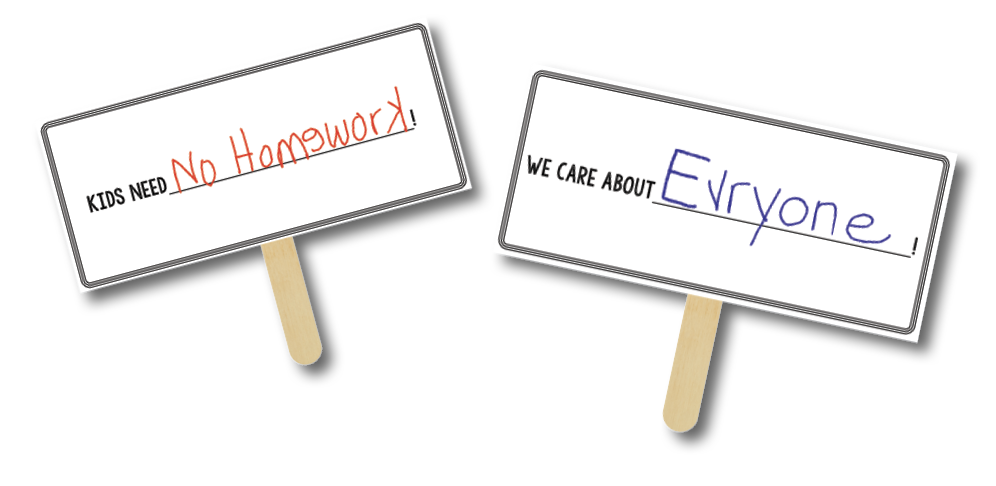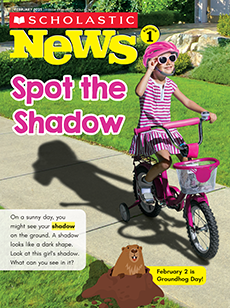We're in This Together Lesson Plan
Academic Standards
Reading Objective:
Children will analyze the reasons for peaceful protests and how they work, both in Dr. King’s time and today.
Social Studies Focus:
Dr. Martin Luther King, Jr.
Social-emotional Focus:
fairness, empathy
CCSS:
SL.1.2 Discuss a video; L.1.4 Clarify words and phrases; RI.1.1 Key details; RI.1.5 Nonfiction text features; L.1.1.A Capital letters; RI.1.10 Read complex texts, L.1.1 Conventions of English when writing
- Before teaching the lesson, download and read the quick note from the editors here. It will get you ready to teach the lesson with confidence.
- Watch "Dr. King: A Leader and a Hero" to give kids background information on Dr. King. Afterward, you might ask kids why they think people call Dr. King a hero. (SKILL: SL.1.2 Discuss a video)
- Play the vocabulary slideshow. This issue’s featured words are laws, segregation and protests. (SKILL: L.1.4 Clarify words and phrases)
- Read the issue together, pausing to ask the questions on the Read and Think skill sheet:
- Why were the laws unfair? (Answers include: They kept Black people and white people apart; they made life hard for Black people.)
- What is one way that Dr. King worked to change the laws? (Answer: He gave speeches; he led peaceful protests.)
- What made the protests powerful? (Answer: People worked together to stand up for what was right.)
- Why do you think having a friend by your side can make you feel brave? (Possible answer: If you work with friends, it can help you feel stronger than you would if you were alone.) (SKILL: RI.1.10 Read complex texts)
- About the protests going on today: Try to find out how much kids already know and meet them where they are. Ask questions such as, “What have you heard about this? Have you seen anything on TV or heard your family talk about it?” A simple explanation might be: It’s not OK to hurt people. Some Black and brown people were hurt and killed. People are sad and angry about it. They want it to stop happening.
- About the end of the Dr. King timeline on page 4: Some kids might be curious about the line “He was killed.” if they ask, you can be honest and factual about what happened: Dr. King was shot while he was standing on the balcony of a motel.
- Kids practice text features as they make a digital poster in honor of Dr. King. When they’re done, they can even print it out. (SKILL: RI.1.5 Nonfi ction text features)
- Use the reading checkpoint skill sheet to gauge children’s comprehension of the issue. (SKILL: RI.1.1 Key details)
- With this printable, kids circle the letters that should be capitalized in different sentences. When they put all the letters together, they’ll make a surprise word: leader! (SKILL: L.1.1.A Capital letters)

Objective: Children will make signs to share the causes they care about.
Materials: Make a Mini Sign skill sheets, pencils, crayons, glue or tape, craft sticks
- Print out copies of the signs and let each child choose one. To get kids started, you can brainstorm some topics that kids might care about. Try to steer them away from topics like “more dessert” or “extra TV time” and toward more meaningful causes, such as:
- healthier school lunches
- a cleaner playground
- saving stray animals
- Then let kids choose their own topic, complete the sentence, and draw a picture to go with it. Some kids may want to write about the more “grownup” topics of today—and that’s great too! If they have the knowledge, they should share the message.
- Finally, let kids glue or tape a large craft stick to the bottom middle of the paper to complete their sign. You can hang the signs outside your classroom to show the whole school what your class cares about!
(SKILL: L.1.1 Conventions of English when writing)
